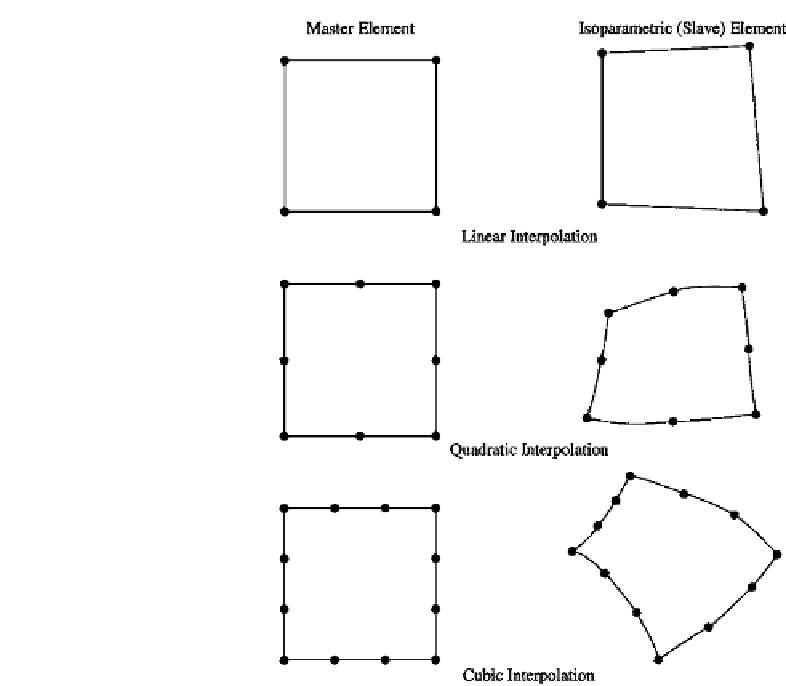Information Technology Reference
In-Depth Information
FIGURE 6.41
Quadrilateral elements and their isoparametric forms.
linear interpolation functions for triangles and rectangles lead to arbitrary triangles and
quadrilaterals, respectively, and higher order interpolation functions lead to elements with
curved boundaries.
It is also possible that a nonisoparametric representation for the parametric geometry can
be used. If the geometric representation is of lower order than the interpolation function, the
element is said to be
subparametric
. The converse defines a
superparametric
element. These
parametric elements are most frequently employed in modeling three-dimensional solids.
In some cases, use of these elements can contribute to modeling economy.
More isoparametric formulations for two-dimensional elements will be considered in the
following sections. In particular, we will treat elements for the stretching of a plate, i.e., a
flat element with in-plane loading.
6.7.1
Triangular Isoparametric Element
For a triangular master element, choose a local coordinate system with an origin at a vertex
and with the remaining vertices being located by nondimensional coordinates
ξ
,
η
at (0, 1)
and (1, 0) as shown in Fig. 6.42.
First derive the displacement shape function for the slave element. Suppose a linear
trial function approximates the displacements in a triangular plate element undergoing








Search WWH ::

Custom Search